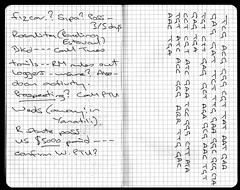I have a Western Digital 1TB MyBook Studio external hard drive, with a triple interface: USB, Firewire 800 and eSATA. It's lovely - quite, roomy, and previous WD drives have been very reliable. It's under a year old.
It has all of my last year's work archived on it. A LOT of work.
It suddenly failed to mount on my Mac.
The disk would spin up - I could hear it spinning the disk up (it's v. quiet, mind) - but the cylon lights on the front wouldn't light up, and it wouldn't mount to the desktop. Checking system profiler for Firewire devices only showed an Unknown Device, and a transfer speed of up to 800Mbps.
Disk utility completely failed to see it.
So - I'm sitting here thinking that I'd need to rip out the drive, find an enclosure, void my warranty... you name it.
And then I found this:
http://www.fixya.com/support/t394049-drive_listed_as_unknown_device_mac_os
Feb 14, 2008
- After posting my question, I got through to a Wd service manager who checked everything out with me and finally suggested I tap the drive sharply on the back since a power button would sometimes stick. I did that and the button must have released since the drive then became bootable, recognizeable and has been working since. Sorry to have been such a bother for so simple a solution; I had tried to work the button but I quess it needed a slap--maybe I do too!
Martin
So - I've just unplugged my drive, given it four hard taps with my knuckles on the casing at the back - and bingo. It works again. Yay!
So - how to solve a problem with a Western Digital MyStudio 1TB hard drive failing to mount on a Mac. Worked for me, deserves some google juice.


